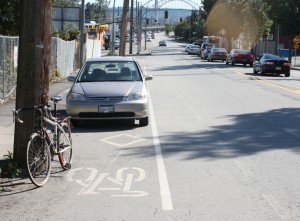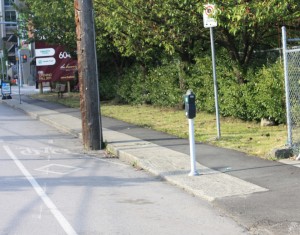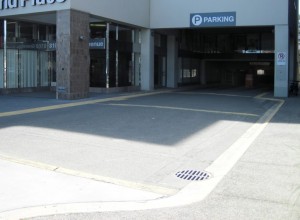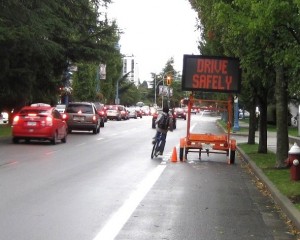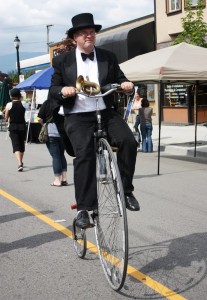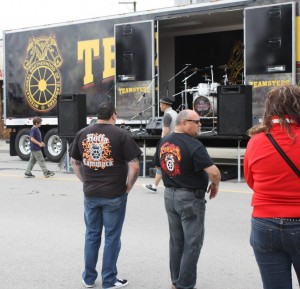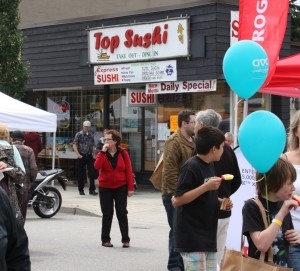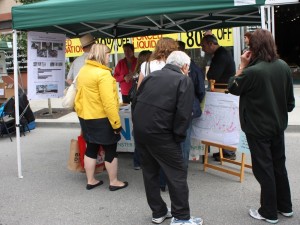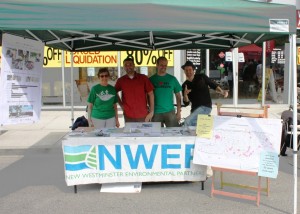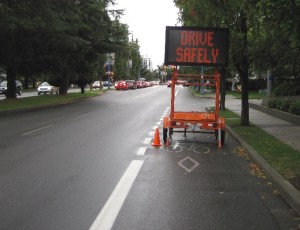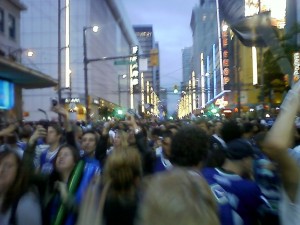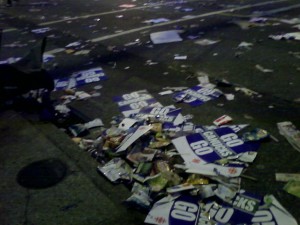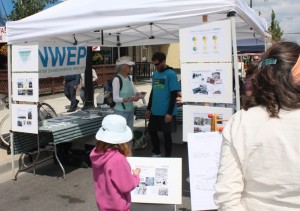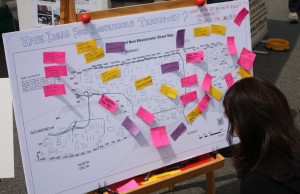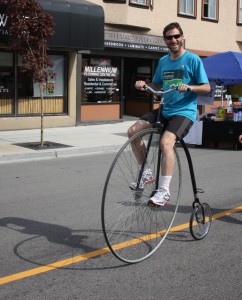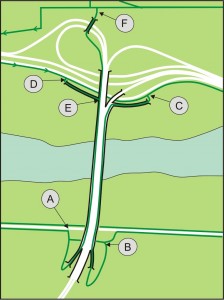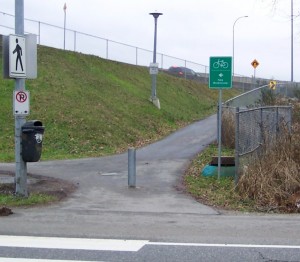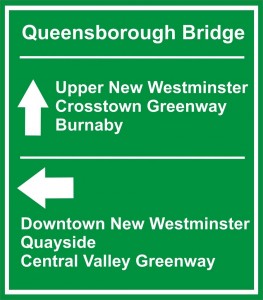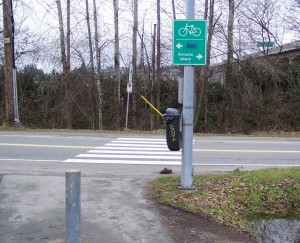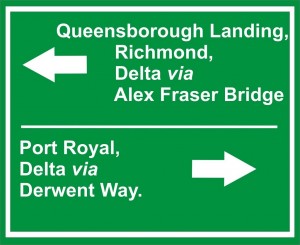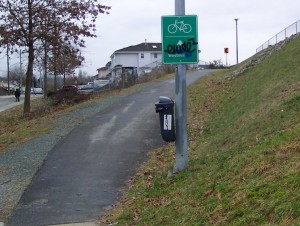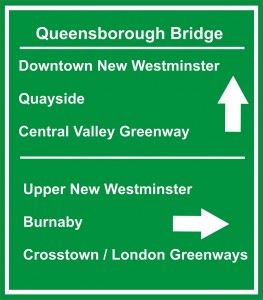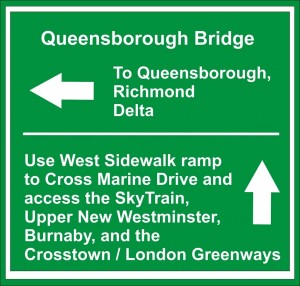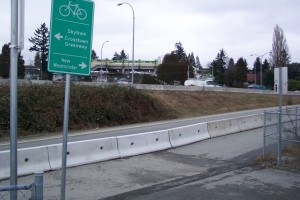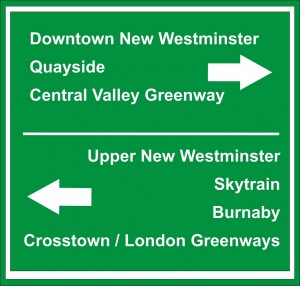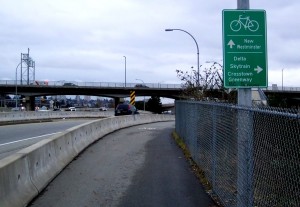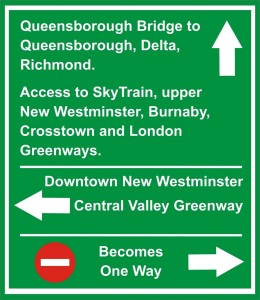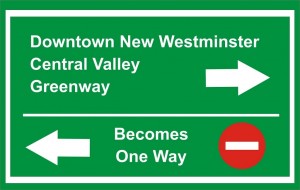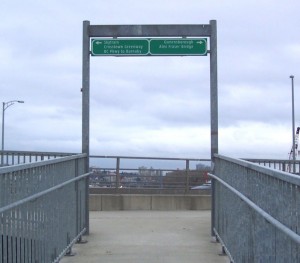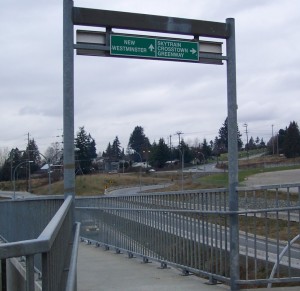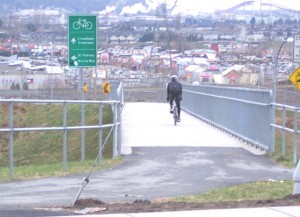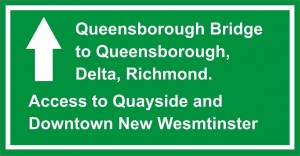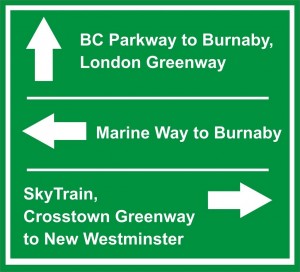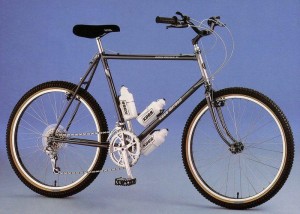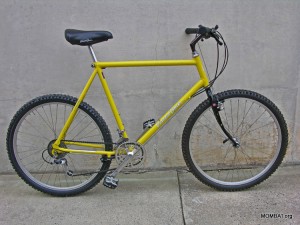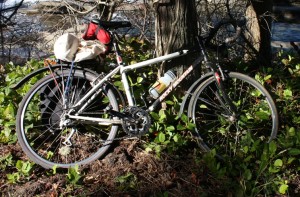This is a tragic story. Cyclist falls off his bike, hits his head, and dies. No less tragic than the driver who is momentarily distracted, causing an accident or death (something that occurs dozens of times a year in Toronto, and causes over 500 deaths a year in Ontario) or a pedestrian slipping and falling causing fatal injuries (more common than you think!), or even a pedestrian being killed by a car (which happens more than 100 times a year in Ontario), but tragic and probably completely avoidable.
Of course, the immediate reaction reading this (especially amongst non-cyclists) is the presumption that a helmet would have saved the cyclist’s life, and ergo: helmet laws. We don’t know if that is true, but it fits the current narrative in the media (bicycles are dangerous, nothing we can do about it but drive cars instead just to be safe, or at least put styrofoam beer coolers on the cyclist’s heads!). In this story, that is further reinforced by the last paragraph:
“About two months ago, Ontario’s deputy chief coroner released a report on more than a hundred cycling deaths that said helmet use by all cyclists can decrease fatal head injuries.”
Just for fun, you can read the Deputy Chief Coroner’s report right here. Proving that the CBC got the report pretty much right, while fitting the current media narrative, the DCC did indeed recommend a provincial helmet law. Down there on Page 30, we find Recommendation #11:
The Highway Traffic Act should be amended to make helmets mandatory for cyclists of all ages in Ontario. This should occur in conjunction with an evaluation of the impact of mandatory helmet legislation on cycling activity in Ontario.
The DCC is suggesting a helmet law, and that the impact of that helmet law on bicycle use be evaluated after it is implemented. This reads to me like some acknowledgement of data from various jurisdictions that helmet laws actually dissuade people from riding bikes. See the experience with bike share programs in cities with mandatory helmet laws vs. cities without them. There is an argument to be made that the public health risk posed by helmetless bicycle use may be outweighed by the public health benefits of more people riding bikes. The data ia ambiguous at best, so the DCC is just asking the Government of Ontario to collect this data, allowing the policy change can be fairly evaluated. Sounds reasonable.
You know what is missing from much of the reporting on the DCC report recommending a helmet law? The other 13 recommendations!
I am pretty agnostic towards helmet laws (although I wear one 95% of the time while riding), but wouldn’t mind them so much if there was an equal push from non-cyclists so concerned about the health and well being of cyclists to implement the other changes the DCC suggests (excerpted here) :
Recommendation #1: A “complete streets” approach to guide the development of existing communities and the creation of new communities…require that any (re-)development give consideration to enhancing safety for all road users, and should include: Creation of cycling networks (incorporating strategies such as connected cycling lanes, separated bike lanes, bike paths and other models appropriate to the community.) and Designation of community safety zones in residential areas, with reduced posted maximum speeds and increased fines for speeding.
More info on “complete streets” is available here, but basically, we have to stop designing roads to just move cars as quickly and efficiently as possible while treating sidewalks, bike paths, and crosswalks as inconvenient things shoehorned into an established car-moving network.
Recommendation #2: An Ontario Cycling Plan should be developed [to] establish a vision for cycling in Ontario, and guide the development of policy, legislation and regulations and commitment of necessary infrastructure funding pertaining to cycling in Ontario.
My translation: make planning for bicycles on the public roads a Provincial policy, not just leaving it up to local governments, and make the Province provide the funding to build the appropriate infrastructure.
Recommendation #3: The Ministry of Transportation should identify the development of paved shoulders on provincial highways as a high priority initiative.
Makes sense: fix the damn roads.
Recommendation #4: A comprehensive public education program should be developed to promote safer sharing of the road by all users [including] a targeted public awareness campaign, in the spring/summer months, with key messages around cycling safety; education targeted at professional truck drivers regarding awareness and avoidance of cycling dangers; education / regulation directed towards Beginning Driver Education (BDE) courses and driving instructors to include sharing the road and bicycle safety; public safety campaigns around the dangers of distracted and impaired cycling.
Of course education would help, but I love how the target for this education is not just cyclists, but also professional and learning drivers. The very sad recent story in New Westminster where a Professional Driver was found not at fault for the death of a young cyclist that he “just didn’t see” before delivering the right hook demonstrates part of the problem.
Recommendation #5: It should be a requirement that important bicycle safety information (such as rules of the road and helmet information) be provided to purchasers of any new or used bicycle. Such information could be included in a “hang tag” information card attached to the handlebar of every bicycle at the time of purchase which would include critical information and a reference to the Ministry of Transportation website and Service Ontario for additional bicycle safety information and publications.
OK, here is one I am less fond of. Putting a label on a bike that says “this thing is dangerous” irritates the hell out of me. I can go into Home Depot and buy an axe without having to sift through a bunch of warning labels about the ways I can hurt myself or others with it. But I buy a barbeque and am provided 400 pages of nonsensical warnings about burning myself or immolating my neighbourhood. This seems an onerous burden to put on bicycle manufacturers and sellers, with little actual gain. But maybe it is my life in a retail bike shop coming back to influence my opinion here…
Recommendation #6: Cycling and road safety education should be incorporated into the public school curriculum.
Boom! Yes! Mandatory bike safety training of the youth would go a long way towards correcting bicycle behavior, and normalizing the use of bicycles amongst youth. Right now, organizations like BEST and HUB scramble to get grant money and volunteers to put on education programs, and (as far as I know- can anyone in the school system correct me here?) there is no formal training in school for kids. Maybe I’m engaging in used-to-be-ism, but when I was in grade 3 or 4, our school had an annual bike rodeo, where the RCMP would set up a training course in the school parking lot and teach us basic rules of the road, hand signal, and how to safely get to and from school. Just teaching kids to see the bike as not just a toy, but as a tool they need to be aware of using safely. Does this happen anymore?
Recommendation #7: The Official Driver’s Handbooks should be updated to provide expanded information around sharing the road with cyclists, and include cycling-related scenarios in driver examinations.
All part of the education model, and normalizing the idea of bicycles being part of the traffic system. This might even reduce the number of young drivers yelling at me to get on the sidewalk or honking at me to get out of the way when I am occupying a lane for safety.
Recommendation #8: A comprehensive review and revision of the Highway Traffic Act should be conducted to ensure that it is consistent and understandable with respect to cycling and cyclists and therefore easier to promote and enforce.
Makes sense: fix the damn laws to make riding legally understandable and sensible. I can’t imagine how a new cyclist deals with drivers telling them to “get on the sidewalk” and pedestrians telling them to “get off the sidewalk” when the law is inconsistent and unclear. In New Westminster, it is legal to ride a bike on the sidewalk in some places, and not in others, anyone out there willing to guess where? Think there is signage to indicate this, or are visitors and residents expected to go to the City’s website and search the bylaws? Is riding two abreast illegal? Should it be? How do you define “complete stop” on a bike? Do I have to put my foot down? The laws are written for motor vehicles, and bikes are expected to behave like them, unless strictly forbidden to do so. We need to update out BC Motor Vehicle Act to the modern reality of bikes on roads.
Recommendation #9: A comprehensive review and revision of the Municipal Act, the City of Toronto Act and relevant Municipal By‐Laws should be conducted to ensure that they are consistent and understandable with respect to cycling and cyclists and therefore easier to promote and enforce.
See my comments on #8.
Recommendation #10: The use of helmets by cyclists of all ages should be promoted and supported [including] financial incentives, such as removal of tax on bicycle helmets and helmet rebate program; promotion of helmet use through public awareness campaigns; enforcement of existing legislation regarding helmet use in cyclists under the age of 18.
Like I said, I am agnostic about bike helmet laws, but I almost always wear a helmet, and was wearing a helmet for years before the BC Helmet Law was introduced. This is through public awareness, and no small amount of social pressure from the people I rode bikes with: there was a time in the early 90’s when attitudes changed about bike helmet use amongst serious road riders, and I followed that trend like the obedient sheep I am. It helped that I was a mountain biker first, and mountain bikers were quick to adopt helmets, mostly because we fell off our bikes and went over the handlebars a LOT in those early days.
Recommendation #11: The Highway Traffic Act should be amended to make helmets mandatory for cyclists of all ages in Ontario. This should occur in conjunction with an evaluation of the impact of mandatory helmet legislation on cycling activity in Ontario.
See above.
Recommendation #12: The Highway Traffic Act should be amended to include a one (1) meter / three (3) foot passing rule for vehicles when passing cyclists. This change in legislation should be reflected in the Ontario Driver’s Handbook, Beginning Driver Education curricula and the driver’s licence examination process.
This is the most stunning recommendation, and of course, the most likely to not be followed. Three-foot rules are not uncommon though, and have a lot of implications. First, it means that any road with less than 3 feet of shoulder, a car is required, by law, to change lanes to pass a cyclist, like if they were passing any other vehicle. It also puts an extra onus on drivers in the event of car-bike collisions, right hooks and brush-offs (when a car passes you so closely, that they effectively push you off the road without touching you). Any bike-car contact where the car was passing the bike in the same lane would become the car’s fault automatically. If this one law was passed and enforced, it would probably do more to prevent highway cyclist deaths than any other recommendation above.
Recommendation #13: Side-guards should be made mandatory for heavy trucks in Canada. In addition, consideration should also be given to requiring additional safety equipment (such as blind spot mirrors and blind spot warning signs) to make cyclists more visible to trucks and decrease the chance of a collision, especially during right-hand turns.
Again, “I just didn’t see him” is the too-common excuse for right-hook crashes, and the result when the right-hook is performed by a large truck is usually fatal. This is not about blaming truckers, they have a lot to deal with in complicated traffic situations, but giving them the tools (actually, forcing them to have the tools) to improve the safety of those around them makes perfect sense.
Recommendation #14: Municipalities and police services (municipal/regional/provincial) should review local data related to cycling injuries and fatalities in order to identify and address opportunities for targeted education, public safety interventions and enforcement activities.
Makes sense: keep track of what is actually causing the accidents and fatalities, and direct your energy towards mitigating those causes, through education, enforcement, and/or infrastructure changes. Often, the Police and ICBC are reluctant to share accident info when bicyclesand pedestrians are involved, as it violates privace rights or is “before the courts”. They cannot even share it with those charged with designing and maintaining the road traffic system. Therefore, their knowledge of what does and doesn’t work in the pedestrian and cycling infrastructure is incomplete.
___________________________________
Overall, it is an excellent set of recommendations. We don’t know if a helmet law would have saved the life of the guy in the story above, nor do we know if any of the other 13 recommendations would have. The problem with the CBC story (and the general media narrative it supports) is how it sets up the helmet as the simple solution to a complex problem; one few jurisdictions are willing to address as comprehensively as the coroner suggests. The result will be more preventable “accidental” deaths, and too much irrational attention paid to helmet laws
